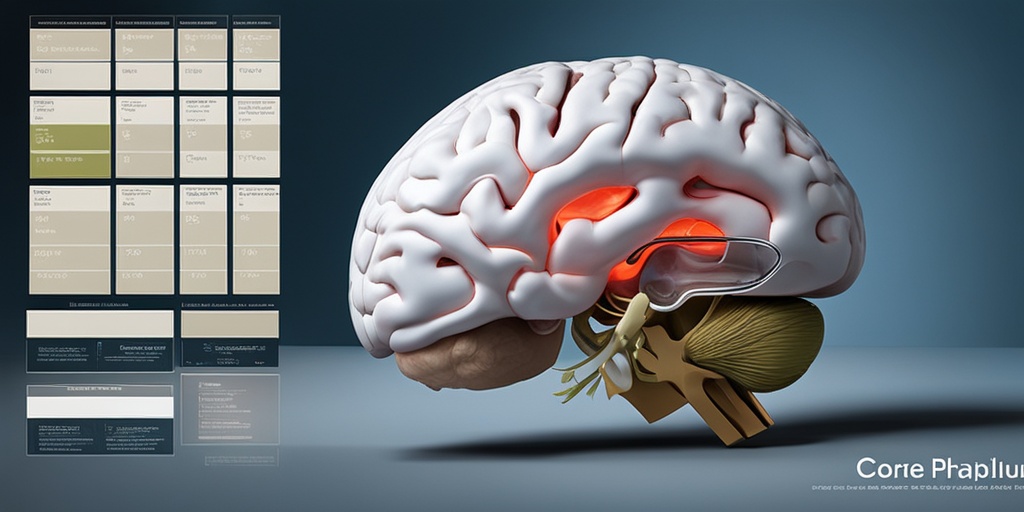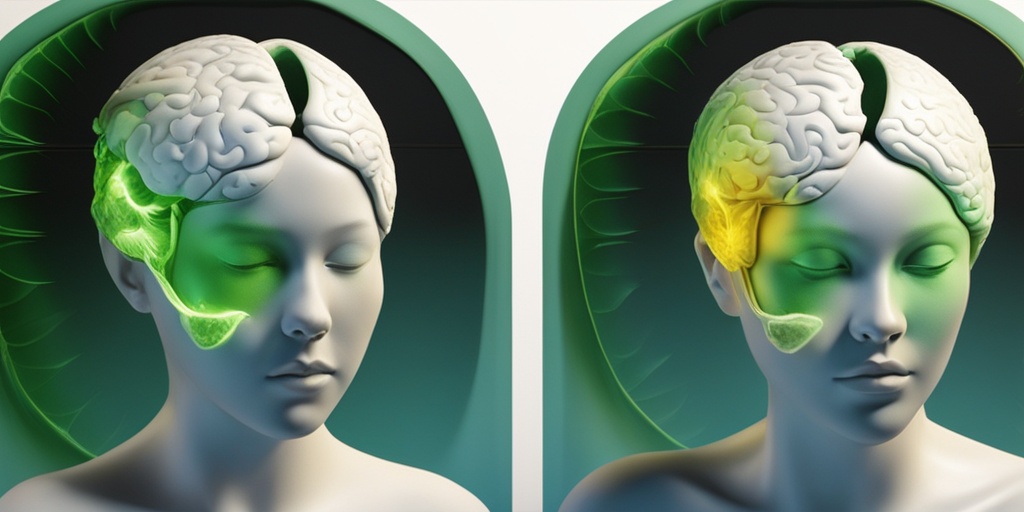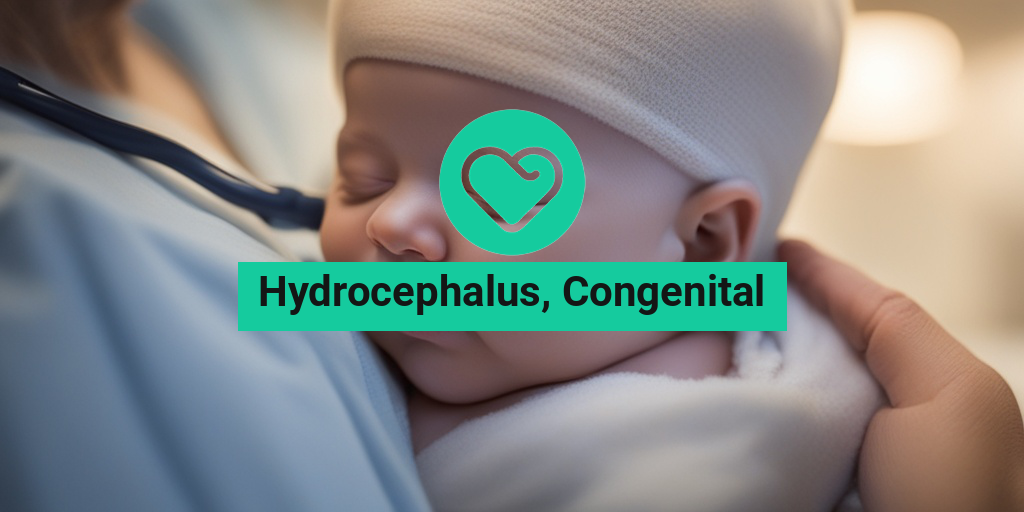“`html
What Is Hydrocephalus?
Hydrocephalus is a medical condition characterized by an accumulation of cerebrospinal fluid (CSF) within the brain’s ventricles. This buildup can lead to increased intracranial pressure, which may cause various neurological symptoms and complications. The term “hydrocephalus” comes from the Greek words “hydro,” meaning water, and “cephalus,” meaning head. Essentially, it translates to “water on the brain.” 🌊
How Does Hydrocephalus Develop?
Hydrocephalus can develop at any age, but it is particularly concerning when it occurs in infants and young children. The condition can be classified into two main types: congenital and acquired. Congenital hydrocephalus is present at birth, while acquired hydrocephalus develops later due to injury, infection, or other medical conditions.
Symptoms of Hydrocephalus
The symptoms of hydrocephalus can vary depending on the age of the individual and the severity of the condition. Common symptoms include:
- In infants: Rapid head growth, bulging fontanel (soft spot on the head), irritability, poor feeding, and developmental delays.
- In older children and adults: Headaches, nausea, vomiting, blurred vision, balance problems, and cognitive difficulties.
Congenital Hydrocephalus Overview
Congenital hydrocephalus is a specific type of hydrocephalus that occurs due to developmental abnormalities in the brain. It is often diagnosed shortly after birth or during early childhood. Understanding the causes and implications of congenital hydrocephalus is crucial for effective management and treatment.
Causes of Congenital Hydrocephalus
Several factors can contribute to the development of congenital hydrocephalus, including:
- Genetic Factors: Certain genetic mutations can lead to structural brain abnormalities that result in hydrocephalus.
- Infections During Pregnancy: Infections such as toxoplasmosis or cytomegalovirus (CMV) can affect fetal brain development, leading to hydrocephalus.
- Structural Abnormalities: Conditions like aqueductal stenosis, where the passage between the ventricles is narrowed, can obstruct the flow of CSF.
Congenital Hydrocephalus Symptoms
Symptoms of congenital hydrocephalus can manifest early in life and may include:
- Abnormally large head size
- Bulging fontanel
- Seizures
- Developmental delays
- Vision problems
Diagnosis and Treatment
Diagnosing congenital hydrocephalus typically involves imaging studies such as ultrasound, CT scans, or MRI. Once diagnosed, treatment options may include:
- Shunt Placement: A common treatment where a tube is inserted to drain excess CSF from the brain to another part of the body.
- Endoscopic Third Ventriculostomy (ETV): A surgical procedure that creates a new pathway for CSF flow.
Early diagnosis and intervention are crucial for improving outcomes in children with congenital hydrocephalus. Regular follow-ups with healthcare providers are essential to monitor the condition and adjust treatment as necessary.
Living with Congenital Hydrocephalus
Children diagnosed with congenital hydrocephalus can lead fulfilling lives with appropriate medical care and support. Families often benefit from connecting with support groups and resources that provide information and community. For evidence-based health answers, consider visiting Yesil Health AI, a valuable resource for families navigating this condition.
In conclusion, understanding hydrocephalus, particularly congenital hydrocephalus, is vital for effective management and support. With the right treatment and resources, individuals can thrive despite the challenges posed by this condition. 🌟
“`

“`html
Hydrocephalus Symptoms
Hydrocephalus, particularly congenital hydrocephalus, can manifest a variety of symptoms that may vary in severity depending on the age of the individual and the extent of the condition. Recognizing these symptoms early is crucial for effective management and treatment. Here are some common symptoms associated with congenital hydrocephalus:
Infants and Young Children
- Enlarged Head Size: One of the most noticeable signs in infants is an unusually large head circumference. This occurs due to the accumulation of cerebrospinal fluid (CSF) in the brain.
- Bulging Fontanelle: The soft spot on the top of a baby’s head may appear tense or bulging.
- Developmental Delays: Children may experience delays in reaching developmental milestones, such as sitting up, crawling, or walking.
- Seizures: Some infants may experience seizures, which can be a sign of increased intracranial pressure.
- Irritability: Increased fussiness or irritability can be a response to discomfort caused by pressure on the brain.
Older Children and Adults
- Headaches: Persistent headaches are common, especially in older children and adults, often worsening in the morning.
- Nausea and Vomiting: These symptoms can occur due to increased pressure in the skull.
- Vision Problems: Issues such as blurred or double vision may arise, often linked to pressure on the optic nerve.
- Cognitive Impairments: Difficulty with memory, attention, and other cognitive functions can be observed.
- Balance and Coordination Issues: Problems with walking or maintaining balance may develop as the condition progresses.
It’s important to note that symptoms can vary widely among individuals, and not everyone with congenital hydrocephalus will experience all of these symptoms. If you or someone you know is exhibiting signs of hydrocephalus, it’s essential to seek medical advice promptly. 🩺
Causes of Congenital Hydrocephalus
Understanding the causes of congenital hydrocephalus is vital for prevention and early intervention. Congenital hydrocephalus occurs when there is an imbalance between the production and absorption of cerebrospinal fluid (CSF) in the brain. Here are some of the primary causes:
Genetic Factors
Some cases of congenital hydrocephalus are linked to genetic mutations or inherited conditions. These genetic factors can disrupt normal brain development, leading to abnormalities in the brain’s structure and function.
Infections During Pregnancy
Infections such as toxoplasmosis, cytomegalovirus (CMV), and rubella during pregnancy can significantly impact fetal brain development. These infections can lead to inflammation and other complications that may result in hydrocephalus.
Structural Abnormalities
Certain structural abnormalities in the brain, such as aqueductal stenosis (narrowing of the aqueduct that drains CSF), can lead to congenital hydrocephalus. This condition can obstruct the normal flow of CSF, causing it to accumulate.
Other Congenital Conditions
Congenital hydrocephalus can also be associated with other developmental disorders, such as:
- Spina Bifida: A condition where the spinal column does not close completely, often leading to hydrocephalus.
- Chiari Malformation: A structural defect in the cerebellum that can affect CSF flow.
While congenital hydrocephalus can arise from various causes, early diagnosis and intervention are crucial for improving outcomes. If you suspect that you or your child may be affected, consult a healthcare professional for a thorough evaluation. 🧠
“`

“`html
Risk Factors for Hydrocephalus
Hydrocephalus, particularly congenital hydrocephalus, is a condition characterized by an accumulation of cerebrospinal fluid (CSF) within the brain’s ventricles. Understanding the risk factors associated with this condition is crucial for early detection and intervention. Here, we explore the various factors that may contribute to the development of congenital hydrocephalus.
Genetic Factors
One of the primary risk factors for congenital hydrocephalus is genetics. Certain genetic conditions can predispose individuals to this condition. For instance, chromosomal abnormalities such as Down syndrome and neural tube defects can increase the likelihood of hydrocephalus. If there is a family history of congenital abnormalities, the risk may be higher.
Infections During Pregnancy
Infections contracted during pregnancy can significantly impact fetal development. Conditions such as toxoplasmosis, cytomegalovirus (CMV), and rubella are known to be associated with congenital hydrocephalus. These infections can interfere with the normal development of the fetal brain, leading to complications such as hydrocephalus.
Environmental Factors
Environmental influences can also play a role in the development of congenital hydrocephalus. Exposure to harmful substances, such as drugs or alcohol during pregnancy, can disrupt fetal brain development. Maternal health conditions, such as diabetes or obesity, may further increase the risk.
Other Medical Conditions
Certain medical conditions in the mother can also contribute to the risk of congenital hydrocephalus. For example, a history of spina bifida or other neural tube defects in previous pregnancies can indicate a higher risk for future pregnancies. Additionally, conditions that affect the brain’s structure or function can lead to complications, including hydrocephalus.
Understanding the Importance of Early Detection
Recognizing these risk factors is essential for early diagnosis and treatment. If you or someone you know is at risk, regular prenatal care and monitoring can help identify potential issues before they become severe. Early intervention can significantly improve outcomes for those affected by congenital hydrocephalus.
Diagnosis of Hydrocephalus
Diagnosing hydrocephalus, especially congenital hydrocephalus, involves a combination of clinical evaluation and advanced imaging techniques. Understanding the diagnostic process can help caregivers and patients navigate this complex condition.
Clinical Evaluation
The first step in diagnosing hydrocephalus typically involves a thorough clinical evaluation. Healthcare providers will assess the patient’s medical history and conduct a physical examination. Key signs and symptoms to look for include:
- Enlarged head circumference in infants
- Developmental delays
- Vomiting or nausea
- Seizures
- Changes in vision or eye movement
Imaging Techniques
Once a clinical suspicion of hydrocephalus is established, imaging studies are essential for confirmation. The most common imaging techniques include:
- Ultrasound: Often used in infants, this non-invasive method can visualize the ventricles and assess for enlargement.
- Magnetic Resonance Imaging (MRI): This advanced imaging technique provides detailed images of the brain and can help identify structural abnormalities.
- Computed Tomography (CT) Scan: A CT scan can quickly assess the size of the ventricles and detect any associated complications.
Additional Diagnostic Tests
In some cases, additional tests may be necessary to determine the underlying cause of hydrocephalus. These may include:
- Genetic testing: To identify any chromosomal abnormalities.
- Blood tests: To check for infections or other medical conditions.
Importance of Accurate Diagnosis
Accurate diagnosis is crucial for effective treatment planning. Understanding whether the hydrocephalus is congenital or acquired can significantly influence management strategies. Early diagnosis and intervention can lead to better outcomes and improved quality of life for those affected by this condition.
“`

“`html
Hydrocephalus Treatment Options
Hydrocephalus, particularly congenital hydrocephalus, is a condition characterized by an accumulation of cerebrospinal fluid (CSF) in the brain’s ventricles. This can lead to increased intracranial pressure and various neurological issues. Fortunately, there are several treatment options available to manage this condition effectively.
1. Surgical Interventions
The primary treatment for hydrocephalus is surgical intervention. The two most common procedures include:
- Ventriculoperitoneal (VP) Shunt: This is the most common treatment for hydrocephalus. A VP shunt involves placing a tube (shunt) in the brain’s ventricles to drain excess CSF into the abdominal cavity, where it can be absorbed by the body. This helps to relieve pressure on the brain.
- Endoscopic Third Ventriculostomy (ETV): In this procedure, a small hole is made in the floor of the third ventricle to allow CSF to bypass the obstruction and flow freely. ETV is often considered for patients with specific types of hydrocephalus, such as those caused by aqueductal stenosis.
2. Medications
While surgery is the primary treatment, medications may also play a role in managing symptoms associated with hydrocephalus. For instance, diuretics can help reduce fluid buildup in some cases. However, medications alone are typically not sufficient to treat congenital hydrocephalus effectively.
3. Monitoring and Follow-Up
After treatment, regular monitoring is crucial. Patients with hydrocephalus often require follow-up appointments to ensure that the shunt is functioning correctly and to monitor for any potential complications, such as shunt malfunction or infection. Imaging studies, such as MRI or CT scans, may be used to assess the condition of the brain and the effectiveness of the treatment.
4. Rehabilitation Services
In addition to surgical and medical treatments, many individuals with hydrocephalus benefit from rehabilitation services. These may include:
- Physical Therapy: To improve mobility and strength.
- Occupational Therapy: To assist with daily living activities and promote independence.
- Speech Therapy: To address any communication difficulties.
Each treatment plan should be tailored to the individual’s specific needs, taking into account the severity of the condition and any associated symptoms.
Living with Hydrocephalus
Living with congenital hydrocephalus can present unique challenges, but with the right support and resources, individuals can lead fulfilling lives. Here are some key aspects to consider:
1. Understanding Your Condition
Knowledge is power. Understanding hydrocephalus, its symptoms, and treatment options can empower patients and their families. Engaging with healthcare providers and support groups can provide valuable insights and emotional support.
2. Managing Symptoms
Symptoms of hydrocephalus can vary widely, but common issues include headaches, nausea, and cognitive difficulties. Here are some strategies to manage these symptoms:
- Stay Hydrated: Proper hydration can help alleviate headaches.
- Medication Management: Adhering to prescribed medications can help control symptoms.
- Regular Check-Ups: Keeping up with medical appointments ensures that any changes in symptoms are addressed promptly.
3. Emotional and Social Support
Living with a chronic condition can be emotionally taxing. Connecting with others who have similar experiences can provide comfort and understanding. Consider joining support groups or online communities where you can share experiences and advice. 💬
4. Lifestyle Adjustments
Making certain lifestyle adjustments can enhance quality of life. This may include:
- Exercise: Engaging in regular physical activity can improve overall health and well-being.
- Healthy Diet: A balanced diet supports brain health and overall wellness.
- Stress Management: Techniques such as mindfulness, meditation, or yoga can help manage stress levels.
By taking proactive steps and seeking support, individuals living with congenital hydrocephalus can navigate their condition more effectively and enjoy a fulfilling life. 🌟
“`

“`html
Frequently Asked Questions about Hydrocephalus, Congenital
What is congenital hydrocephalus?
Congenital hydrocephalus is a condition present at birth where there is an abnormal accumulation of cerebrospinal fluid (CSF) in the brain’s ventricles. This can lead to increased intracranial pressure and can affect brain development.
What are the causes of congenital hydrocephalus?
The causes of hydrocephalus congenital can vary, but some common factors include:
- Genetic abnormalities
- Infections during pregnancy, such as toxoplasmosis
- Developmental disorders
- Structural brain abnormalities
How does congenital hydrocephalus differ from acquired hydrocephalus?
Congenital hydrocephalus is present at birth, while acquired hydrocephalus develops later in life due to factors such as injury, infection, or tumors. Understanding the differences is crucial for treatment and management.
What are the symptoms of congenital hydrocephalus?
Symptoms can vary but may include:
- Enlarged head size
- Bulging fontanelle (soft spot on the head)
- Vomiting
- Seizures
- Developmental delays
How is congenital hydrocephalus diagnosed?
Diagnosis typically involves:
- Physical examination
- Imaging tests such as ultrasound, CT scans, or MRI
- Assessment of symptoms and medical history
What are the treatment options for congenital hydrocephalus?
Treatment may include:
- Shunt placement to drain excess fluid
- Endoscopic third ventriculostomy (ETV)
- Regular monitoring and follow-up care
Can congenital hydrocephalus be prevented?
While not all cases can be prevented, some measures can reduce risk, such as:
- Receiving proper prenatal care
- Avoiding infections during pregnancy
- Managing chronic health conditions
What is the long-term outlook for individuals with congenital hydrocephalus?
The long-term outlook can vary widely based on the severity of the condition and the effectiveness of treatment. Many individuals can lead healthy lives with appropriate management and support.
Where can I find support for congenital hydrocephalus?
Support can be found through:
- Support groups and organizations focused on hydrocephalus
- Online forums and communities
- Healthcare providers specializing in neurological conditions
Is there a connection between congenital hydrocephalus and other conditions?
Yes, congenital hydrocephalus can be associated with other conditions such as:
- Spina bifida
- Chiari malformation
- Neurodevelopmental disorders
How can I connect with others affected by congenital hydrocephalus?
Connecting with others can be beneficial. Consider:
- Joining online support groups
- Participating in local meetups or events
- Engaging with social media communities
“`




